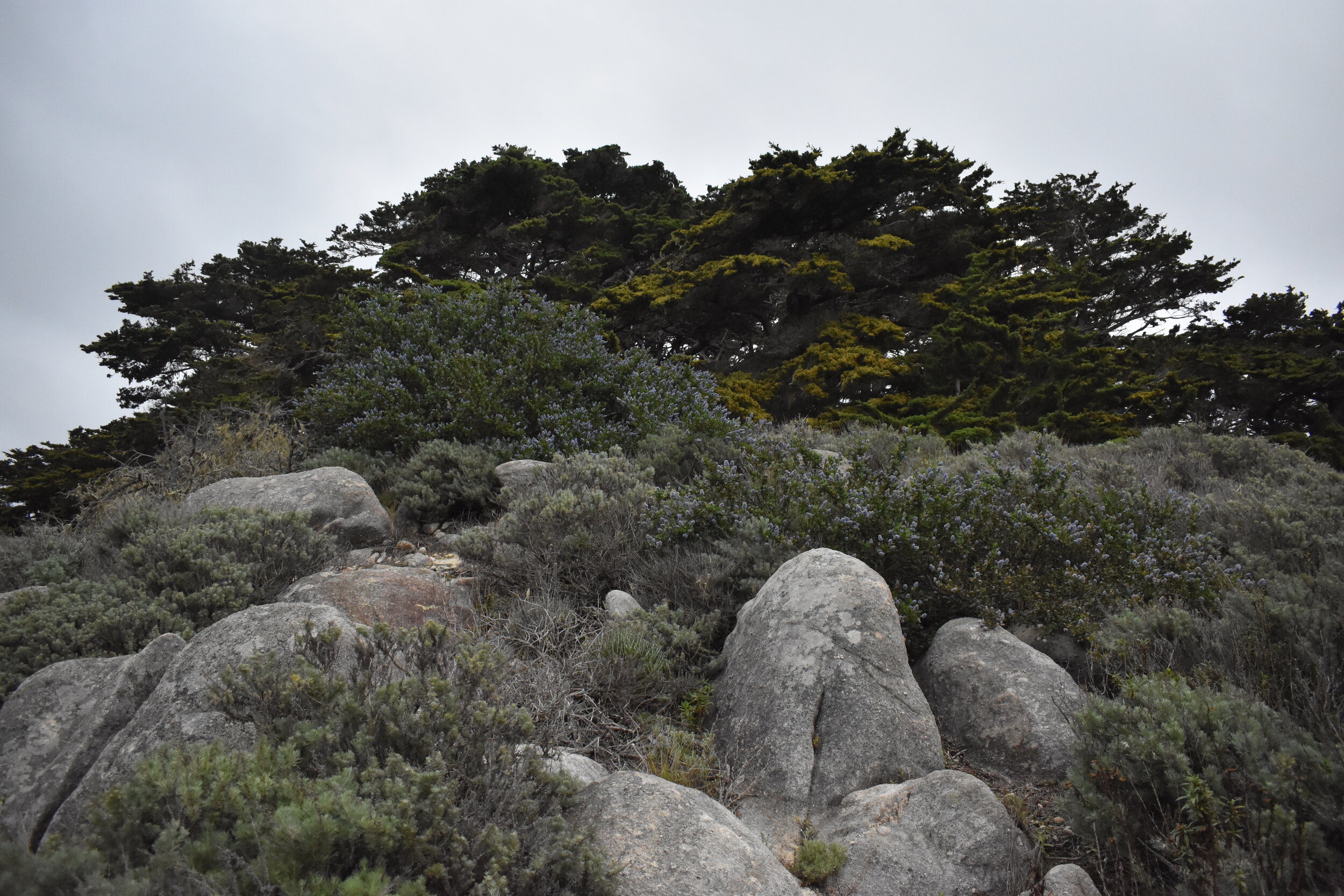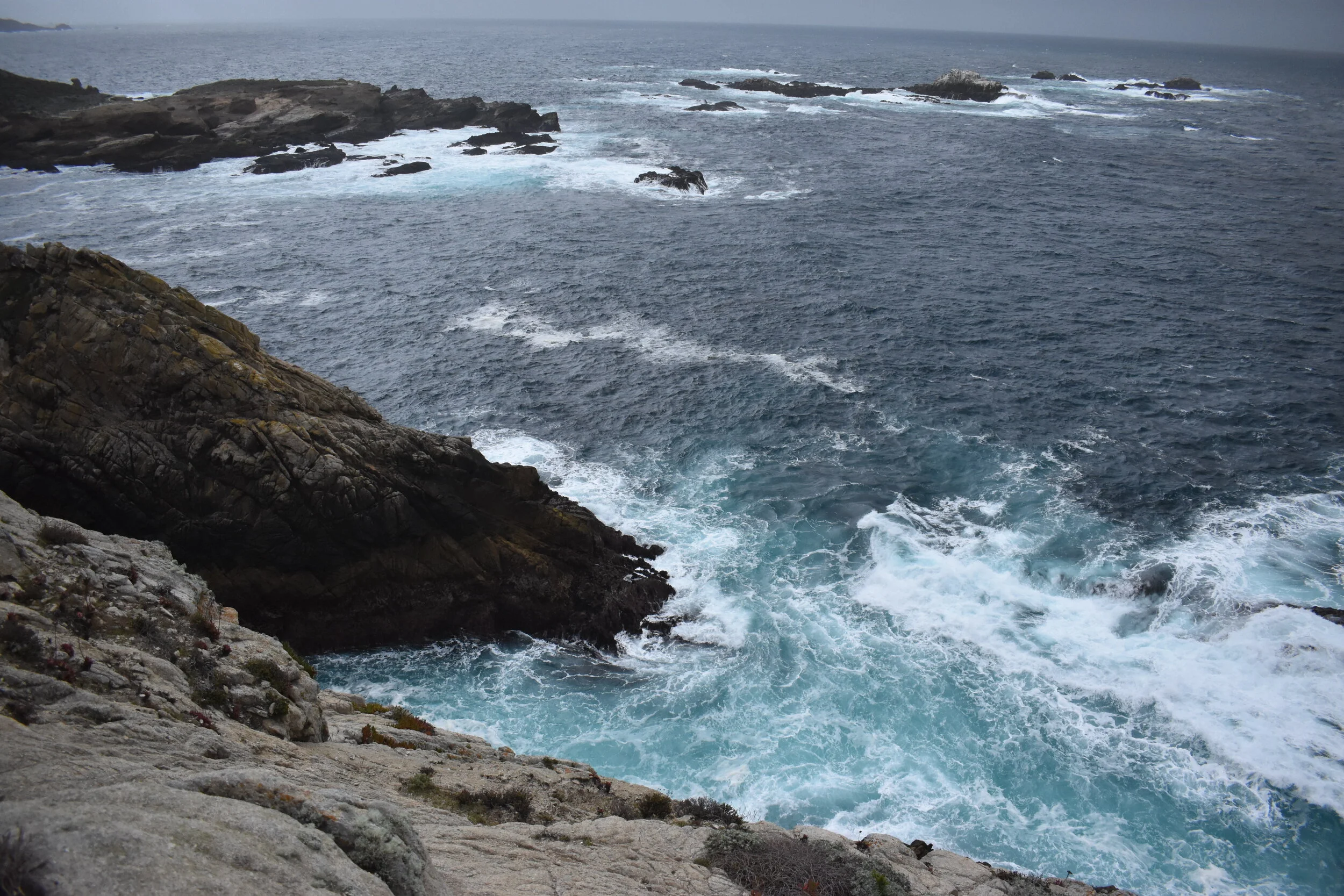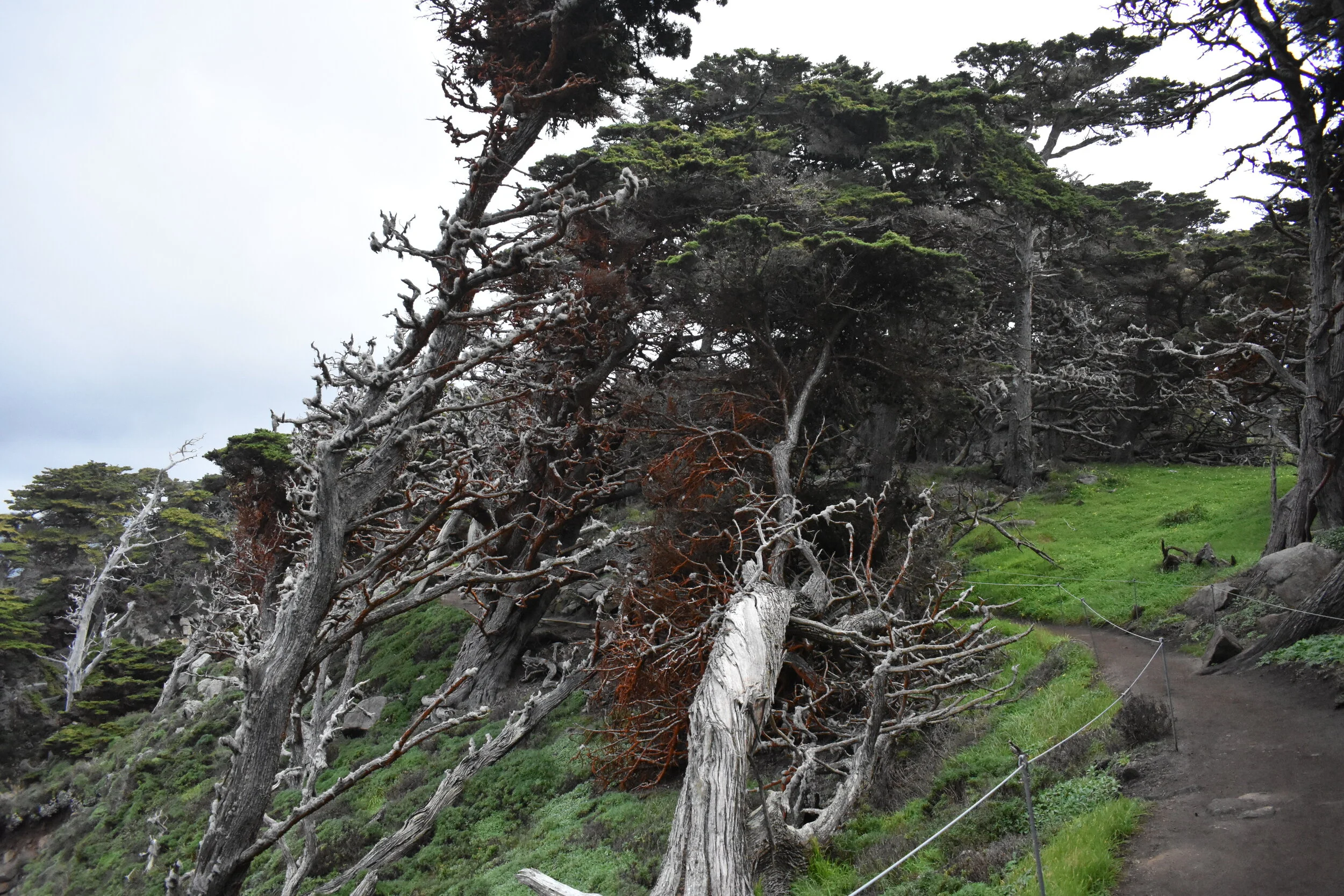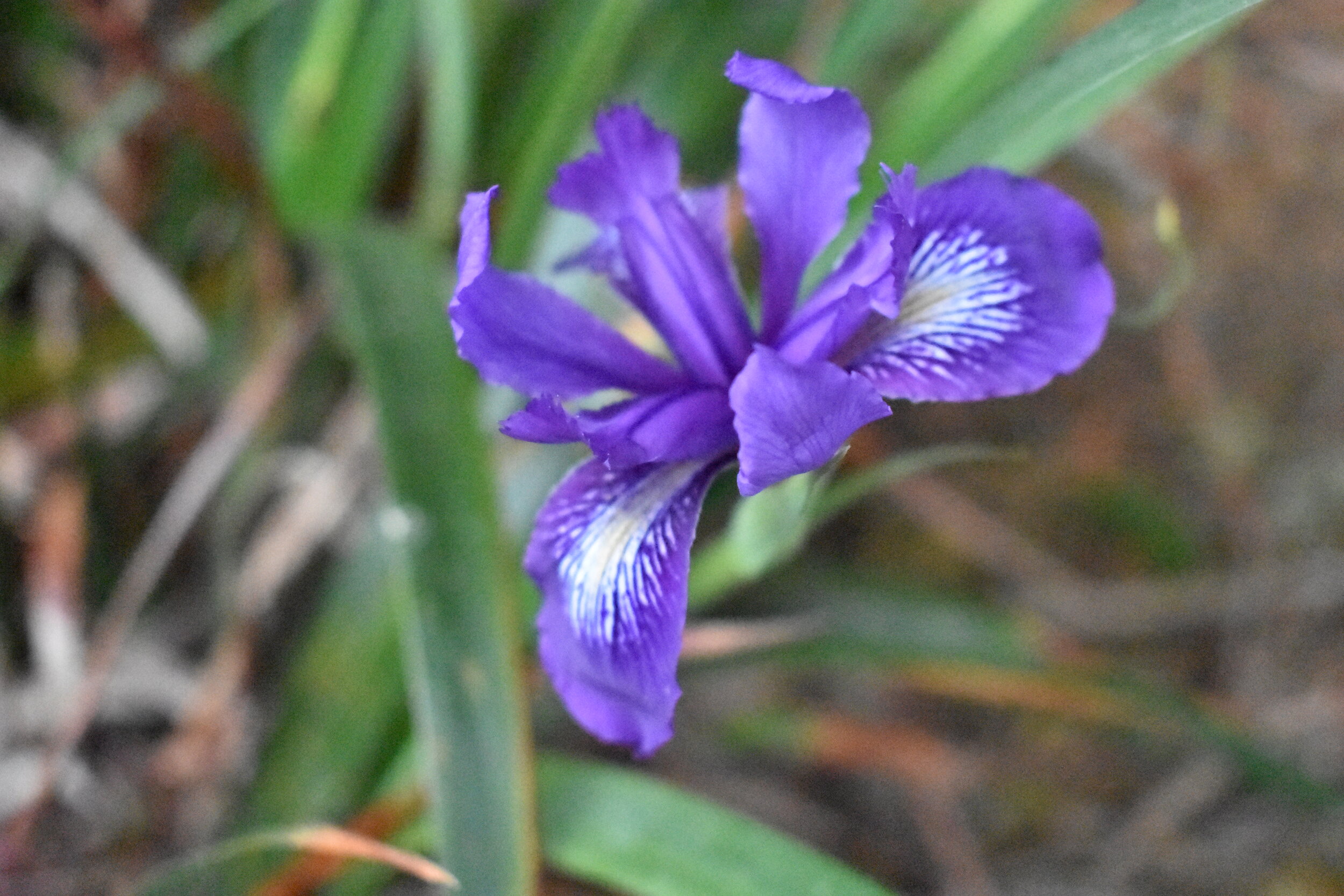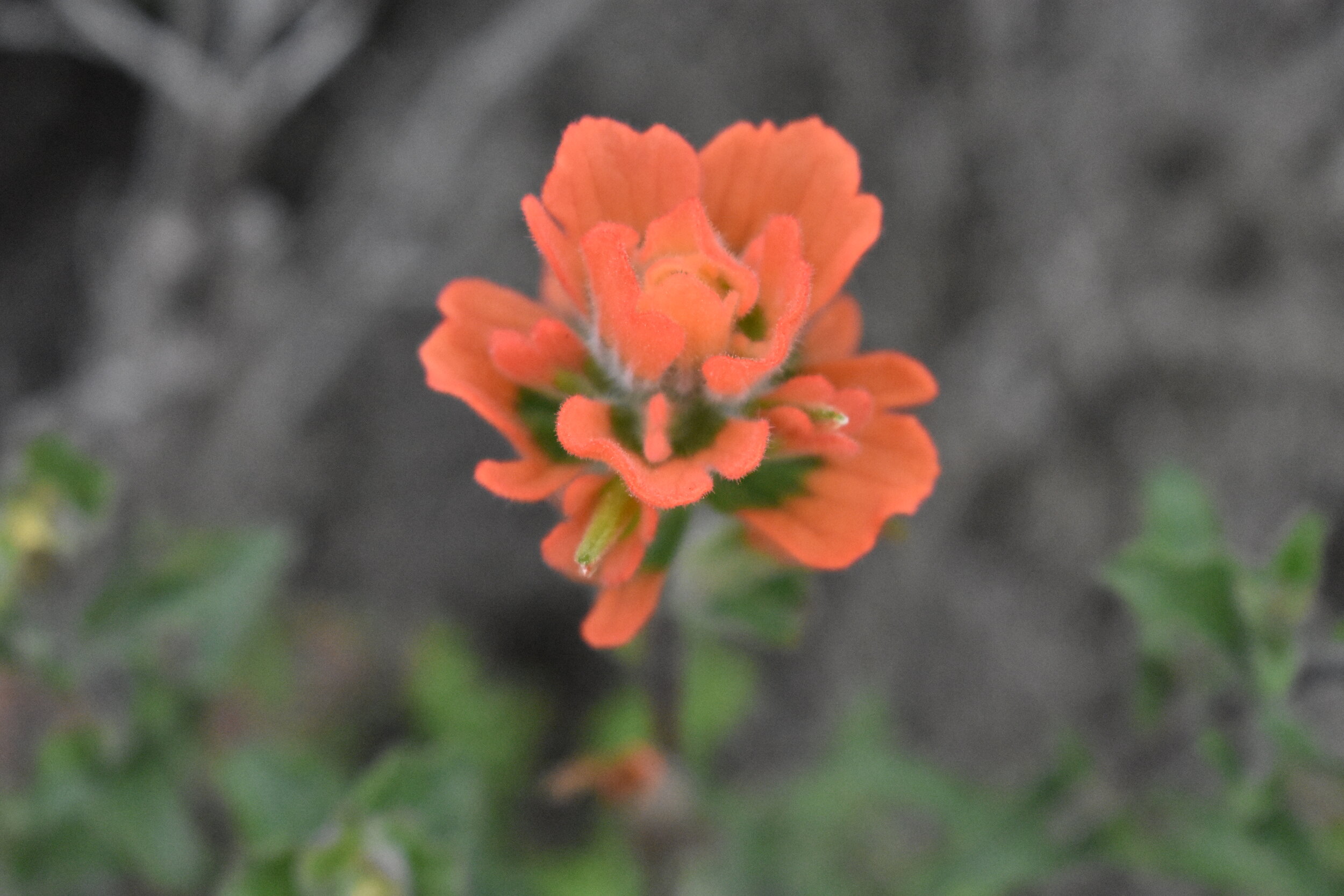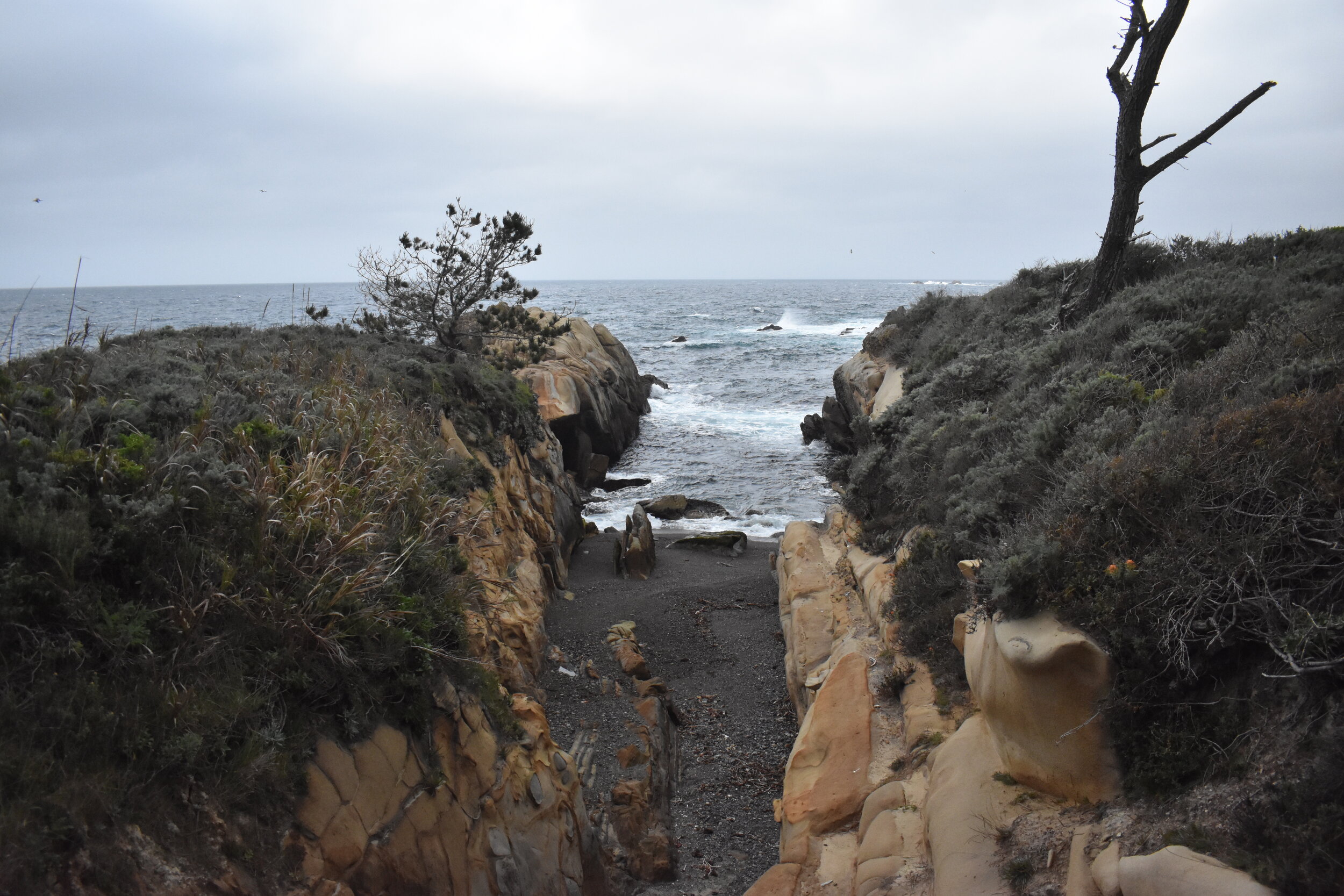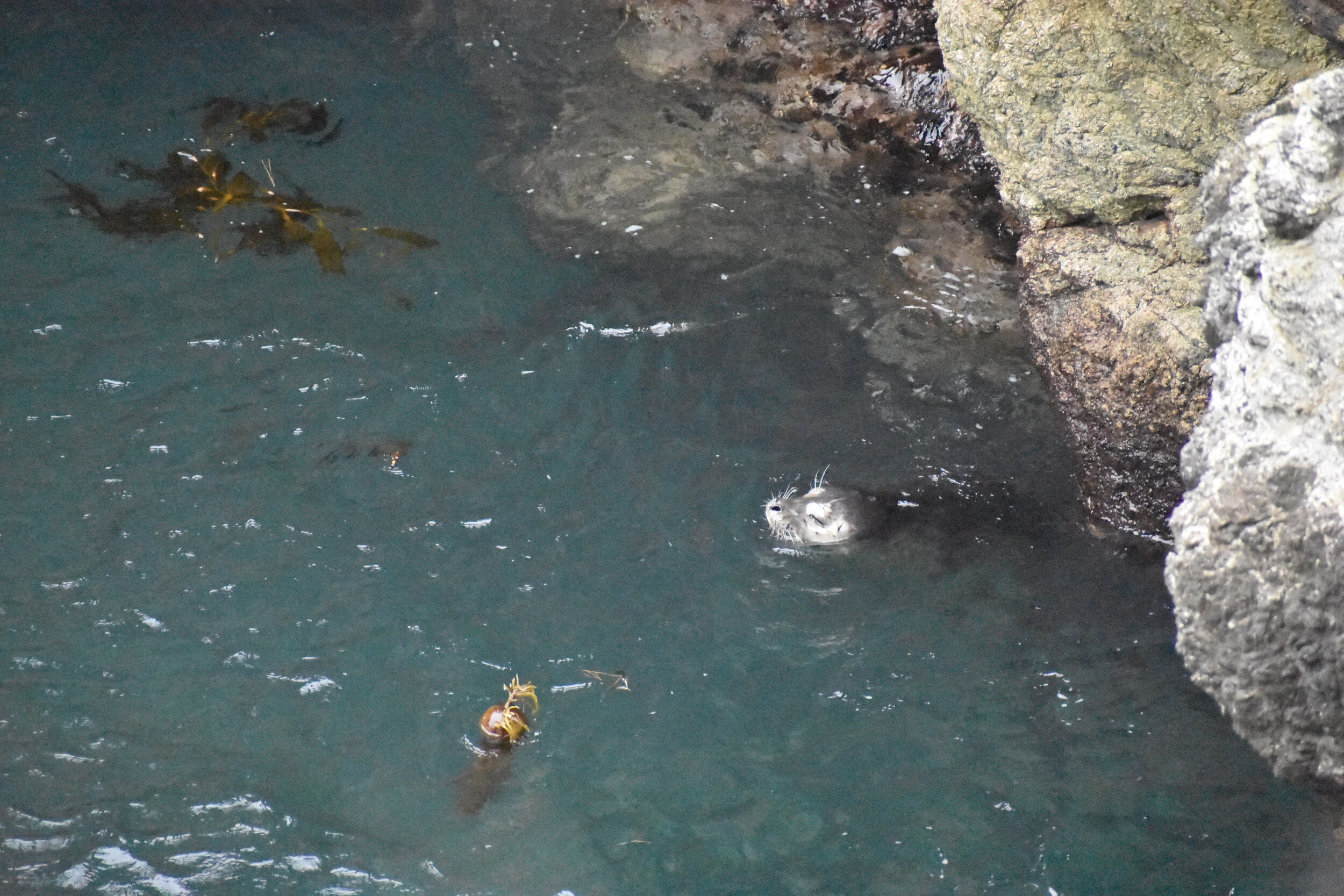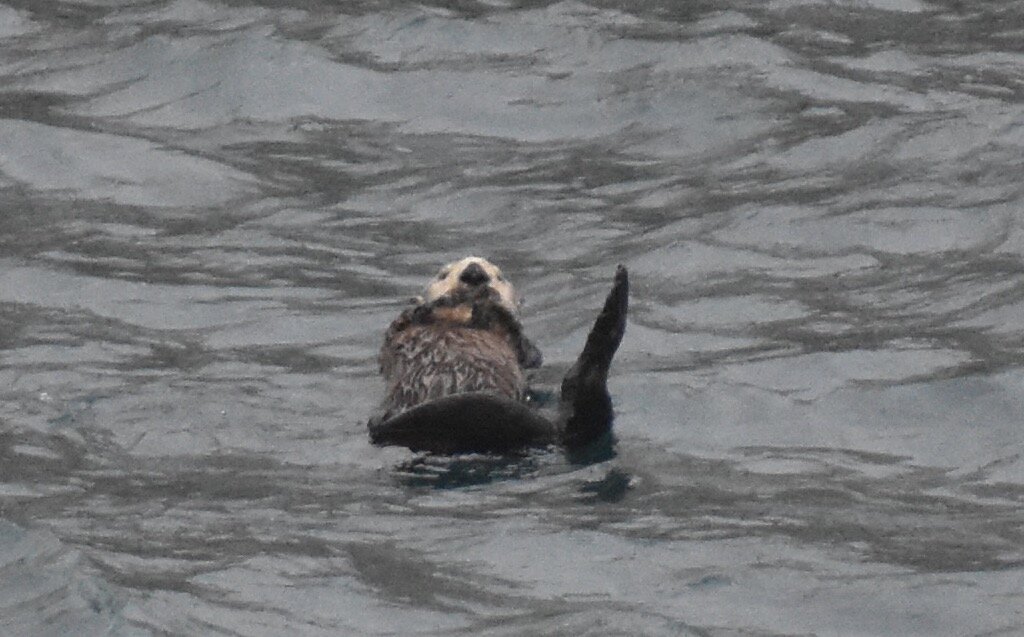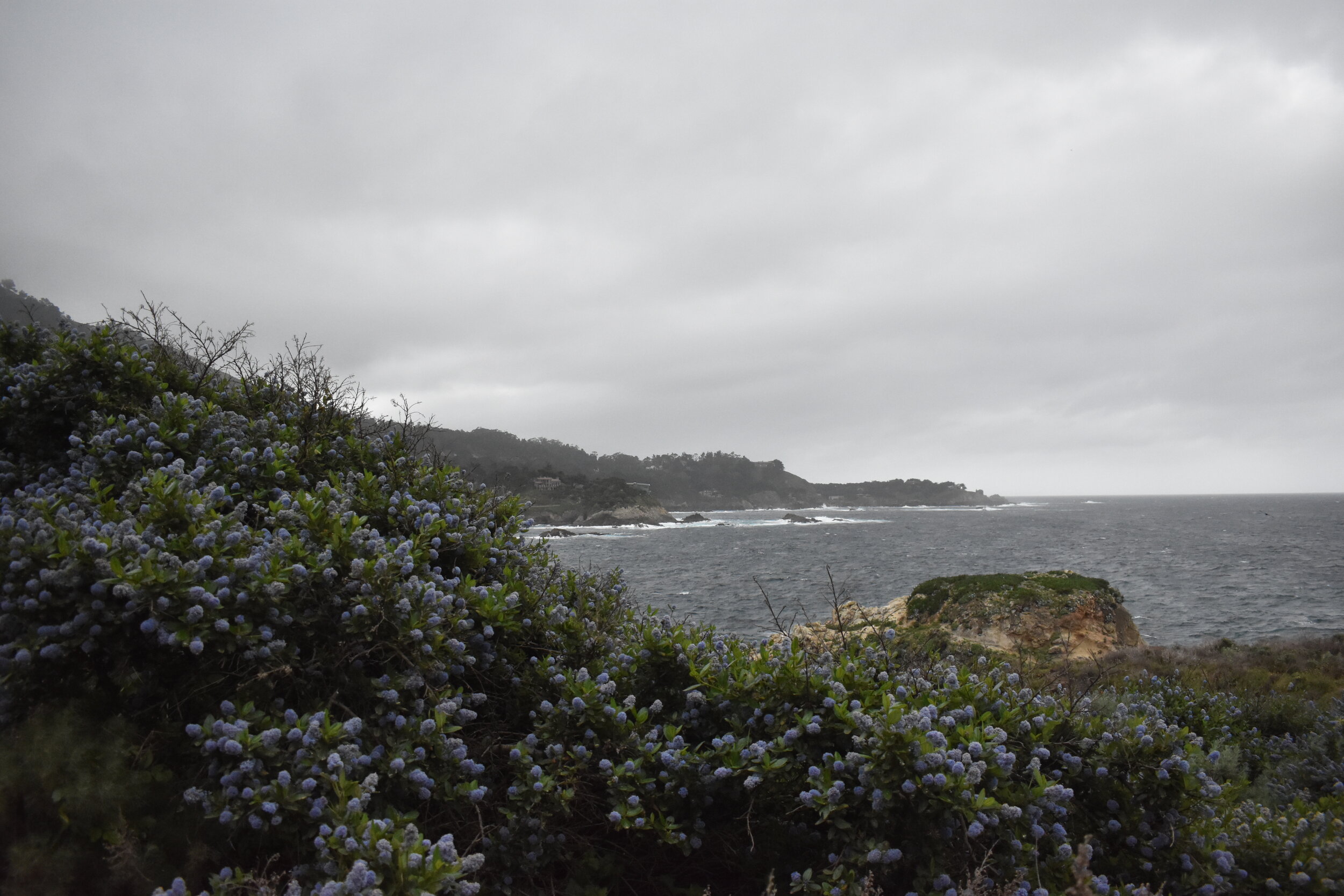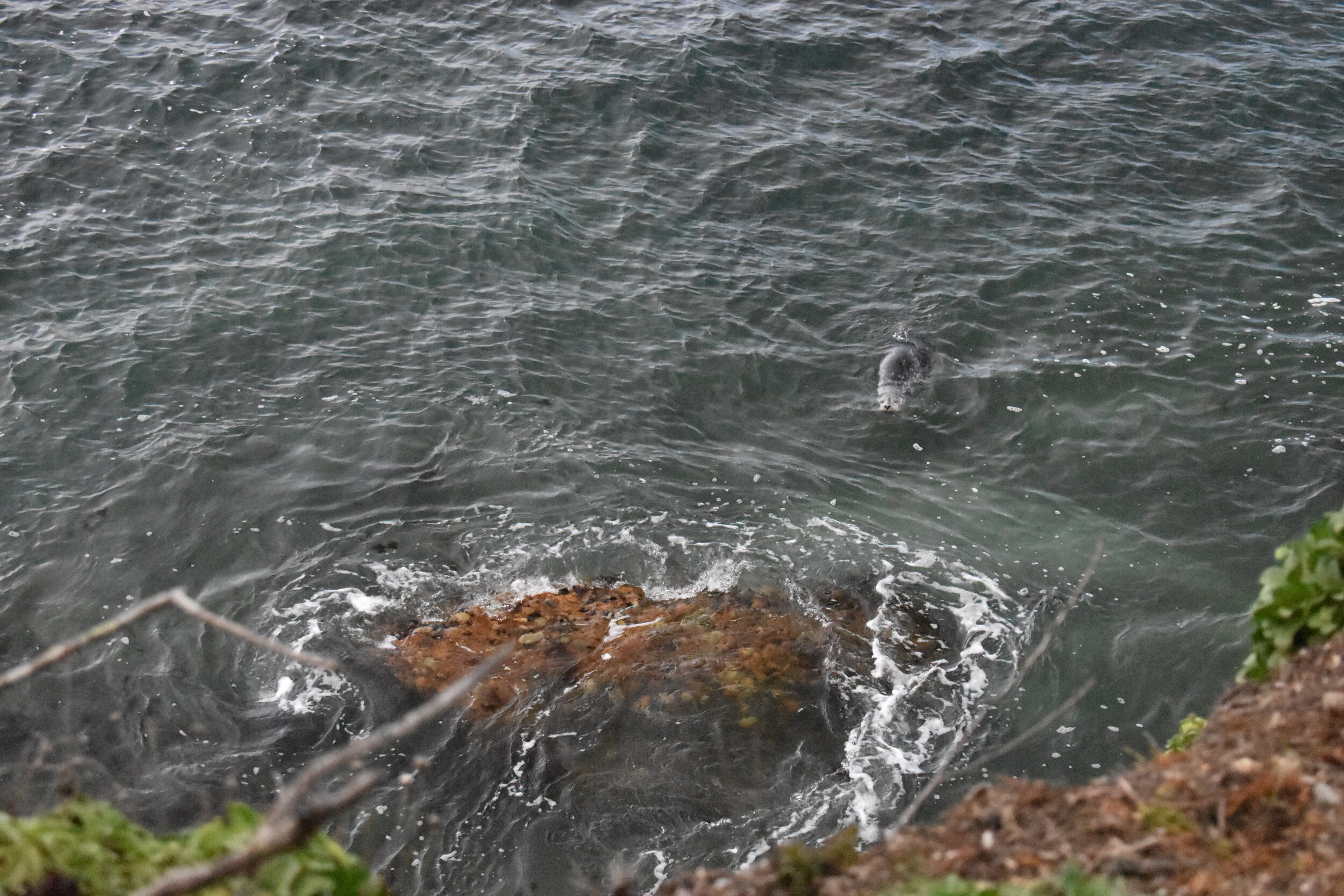Sea Otters & Moody Pacific Views in Point Lobos State Natural Reserve (Carmel, CA)
On our last day during my and my friend Liz’s trip to California, we decided to take an unplanned road trip. Our Airbnb host recommended that we try to make it out to Monterey Bay Aquarium (one of the most famous aquariums in the world) and then go out a little further to the tip of the famous Big Sur coast. Unfortunately, the aquarium had just closed for the foreseeable future the day before (this was when people were just starting to take the global pandemic situation seriously), but we decided to road-trip it out to Big Sur anyway. After a brief Googling, we settled on hitting up another of California’s gorgeous state parks outside Carmel-by-the-Sea, CA.
Point Lobos State Natural Reserve is called the “crown jewel” of the California state park system. It’s famous for the rocks that create headlands and inlets along its coast, as well as its biodiversity. The Carmel submarine canyon lies just north of the reserve, providing cold, nutrient-rich water to support a variety of marine and land life.
The history of Point Lobos dates back 2500 years when Rumsien Native Americans seasonally lived there. In 1851, commercial activities like whaling, shipping, and granite quarrying made Point Lobos a center of international business. The Ohlone also gathered abalone, whose meat is considered a delicacy to some and whose shell is used for mother-of-pearl, at Point Lobos. During World War II, the U.S. Army and Air Force used the reserve as a base for long-range radar and for training soldiers to use amphibious landing craft.
Point Lobos Natural Preserve was the first marine reserve in the U.S, when 750 underwater acres were added to the existing 400 acres of state-owned land in 1960. In 1992, it became part of the Monterey Bay National Marine Sanctuary, the nation's largest marine sanctuary.
It was an exceptionally windy, moody day when we visited Point Lobos. The first hike we embarked on was towards the Allan Memorial Cypress Grove on the Cypress Grove Trail. This is one of the only two naturally growing stands of Monterey cypress trees remaining on earth. Bluff lettuce clung to the granite walls, and the gnarled cypress trees remained obstinate in the face of sea spray and gusts off the Pacific. On some trees and rocks, rust-colored Trentepohlia, or green algae, carpeted their surfaces. The orange color comes from carotene, the same pigment in carrots.
We then continued down to the South Shore Trail, which offers spectacular views of the Pacific, that deep velvety blue fading to aquamarine, and stunning sedimentary rocks. The shore here is part of the Carmelo Formation, composed of colorful sandstone, darker mudstone, and “pudding-stone,” or conglomerate, and worn down by natural processes of erosion from the waves. On this trail, we also saw an array of wildflowers in bloom, including Fremont’s Star Lily, Douglas Iris, Wood Mint, Checker Bloom, and the highlighter-hued California Poppy.
At China Cove Beach, we were able to watch the colony of harbor seals that lives here. It was pupping season, where expectant moms gather at the same beaches where they were born to give birth. Harbor seal pups weigh about 20 pounds and can swim within minutes of birth.
If you’ve been following my blog for awhile, you’ll know that otters are my favorite animal, and unfortunately, I've only seen them in the wild twice: a river otter on a camping trip in Kentucky many years ago, and what we think was an otter when we went to Yellowstone National Park a couple of years ago (and I was driving, so I couldn’t take a picture). So you can imagine my excitement when we spotted our first tan-furred face sticking out of the water after hours of mistaking every piece of driftwood for this elusive animal.
Sea otters have the densest fur in the animal kingdom, which allows them to insulate themselves against the cold water, where they spend most of their lives. They groom, eat, sleep, and socialize in the water, creating groups called “rafts.” To sleep in the water, they wrap kelp around themselves, which anchors them to the rocks on the sea floor. They are among the relatively few tool-using animals in the world, carrying a rock to hammer hard-shell animals to break them open. You can see one of the otters holding either its rock tool or a mollusk on its stomach in one of the pictures below, and I didn’t catch a photo of it, but we did see one otter in the process of breaking open its meal.
Sea otters are 4.5 to 5.5 feet long and weigh 60 to 85 pounds, which is much larger than the North American river otter. But it was still difficult to get great pictures of them, as they usually hang out a ways out from shore to avoid humans. I was pretty shocked to get home and download these photographs later, only to realize that most of these otters were carrying their pups! Sea otters usually give birth in the water, and the mother teaches the pup survival skills and grooms its fur to keep it afloat.
We ended our hike on this side of the reserve by heading out to Pelican Point, where you can get a view of Bird Island. During spring and summer, this rock becomes a sea bird colony. When we visited, we only saw Brandt’s cormorants, though if you visit during the summer, you can catch sight of Western gull chicks and nesting black-crowned night herons.
To finish out our time in Point Lobos, we headed to Whaler’s Cove, hiking past Coal Chute Point and the Pit, all the way to Granite Point. The hike began with us seeing this harbor seal alone, hauled out on a beach just below the road, and remembering that one of the park attendants had told us we might see a seal birth that day if we were lucky. We waited and waited, convinced we saw contractions, but eventually the seal just swam away with the incoming tide. Oh well.
The rest of the hike was beautiful, if a little cold and windy, marked by cliffs and wildflowers and goofy little seal faces popping up out of the water.
Even though our trip to Point Lobos and Carmel-by-the-Sea was unplanned, it ended up being my favorite day from our entire time in California. There was a British candy store in town (that sold strawberry laces, the one candy I bought each and every week I lived in Oxford—I could have cried), we went into an art gallery to pet a dog and ended up chatting to the owner about his artwork, and my heart was full from a day spent in nature. This was no doubt the best way I could have asked to end this trip, and I can’t wait to visit again (and hopefully next time, the aquarium will be open)!






